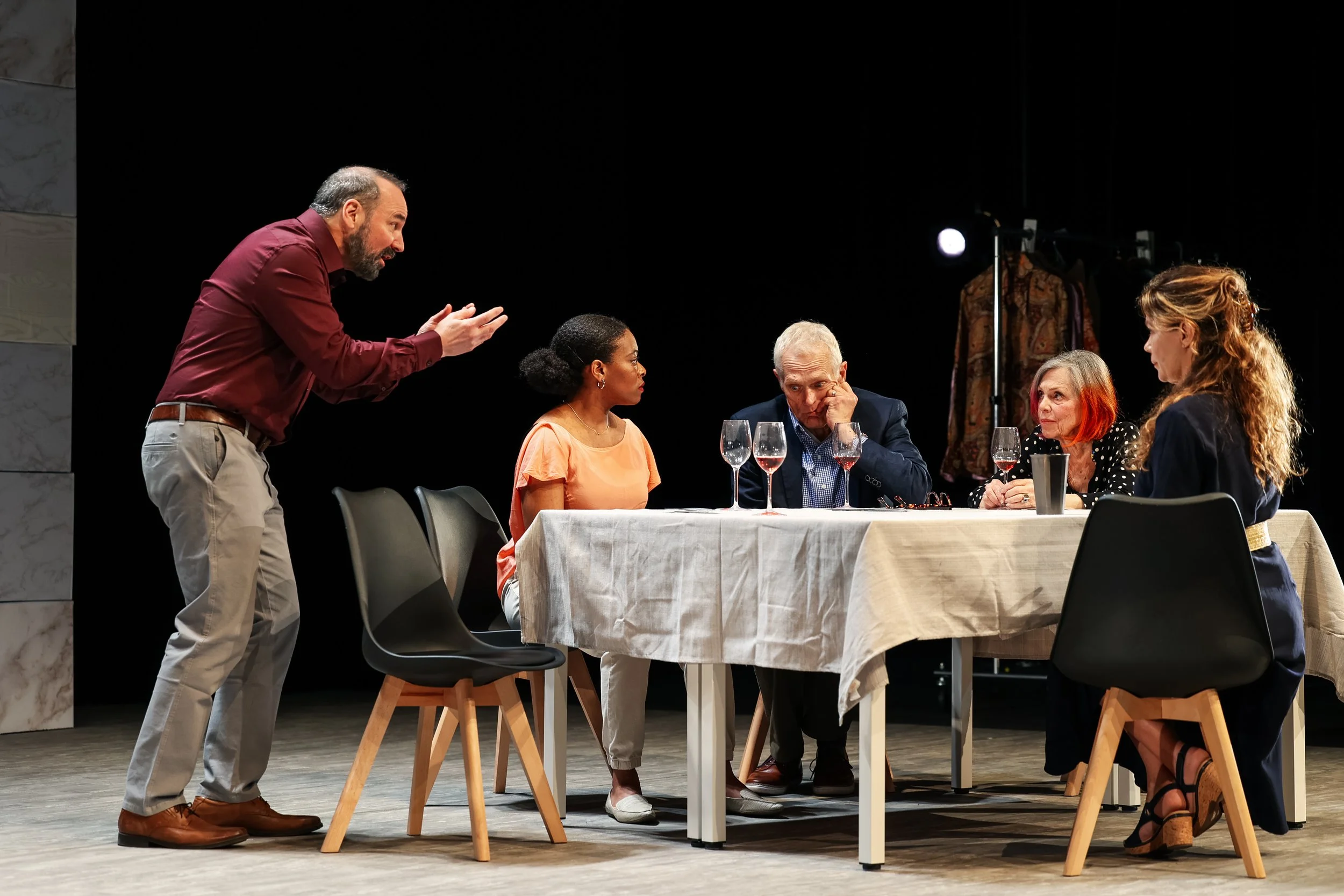Theatre review: Cast gives its all as Ominous Sounds at the River Crossing dives into thorny ideas about authenticity and appropriation
Through metatheatrics, play-within-a-play successfully tackles complex ideas
Photo by Matt Reznek
Touchstone Theatre presents Ominous Sounds at the River Crossing; or, Another Fucking Dinner Party Play at Performance Works and via livestream until March 13
AS ONE OF the most novel works of theatre ever devised, Italian dramatist Luigi Pirandello’s Six Characters in Search of an Author broke the fourth wall by acknowledging the conceit of the stage, introducing characters who knew they were artificial, looking to complete their stories.
With clear inspiration from this seminal play, Jason Sherman’s Ominous Sounds at the River Crossing; or, Another Fucking Dinner Party Play likewise employs self-aware beings who wrestle with their place in the world, exploring thorny ideas about authenticity and appropriation.
Six nameless characters, whom the script assigns numbers, populate a dining-room set, debating who should begin the eponymous dinner party play. “1” (Nicola Lipman) decides she could start, kicking off a domestic scene where two couples, Connie and Peter and Jim and Sarah—played respectively by “3” (Monice Peter) and “4” (Alex Poch-Goldin), “2” (Allan Morgan) and “1”—discuss notions of legacy after one’s death. Midway through the scene, “1” is triggered by the memory of a loss and asks “5” (Kerry Sandomirsky) to step in for her role, but she too soon stops, suddenly jaded by the interiority and inaction of their psychodrama.
Yearning for the days of sweeping stories and grand costumes, “5” covets playing out the epic narratives of her prime again, but quickly finds herself clashing with younger members of her troupe—with “6” (Angela Chu), among others, questioning the propriety of traditional representations in theatre.
Through metatheatrics, whereby characters speak at length about their artifice, Sherman has created a play that reflexively broaches contemporary hot topics in theatre—like the right to roleplay and whose stories can be portrayed. He lampoons the extremes of political correctness and cultural sensitivity; at one point, the characters vote on a decision to vote. There is a commentary on how these social negotiations can often turn polemical, easily devolving into intractable positions.
Interspersed in these discussions are snapshots of current practices aimed at mediating perceived transgressions, such as trigger warnings or the use of social media as a court of public opinion. With biting humour, these moments bring life to issues that might otherwise be staid academic debates, in the same way that the character “5” feels, as an actor, such preoccupations are better dramatized than simply spoken about.
Kimira Reddy’s set establishes a familiar domestic scene, complete with kitchen island and dining room table, and there is a certain delight that comes when the room begins to deform with each character’s upheavals. Lighting designer Itai Erdal transports them to soliloquies using spotlights, or conjures a busy sidewalk through a strip of side lighting.
Similarly, Jamie Nesbitt’s video projections on a back wall of boxes, of a busy warehouse or street traffic, convert the household into different locales, creating the necessary illusions to support the plays within the play.
Sound designer Alistair Wallace fills the stage with space-specific ambience, from jazz in a cocktail bar to the din of automobiles, while elevating critical moments with heightened noises, like a thumping heartbeat. Within these elements, the six-member ensemble gives its all under Roy Surette’s direction, delivering monologues and confrontations with panache.
A century after the debut of Pirandello’s play, Sherman has written a work that continues to celebrate the vitality of the kind of metatheatre the former writer championed. Although not without its flaws—some threads, like the final consequence of presenting only lived experience, feel tenuous—it is by and large an intriguing work that successfully explores ideas around authenticity in all their complexity.













